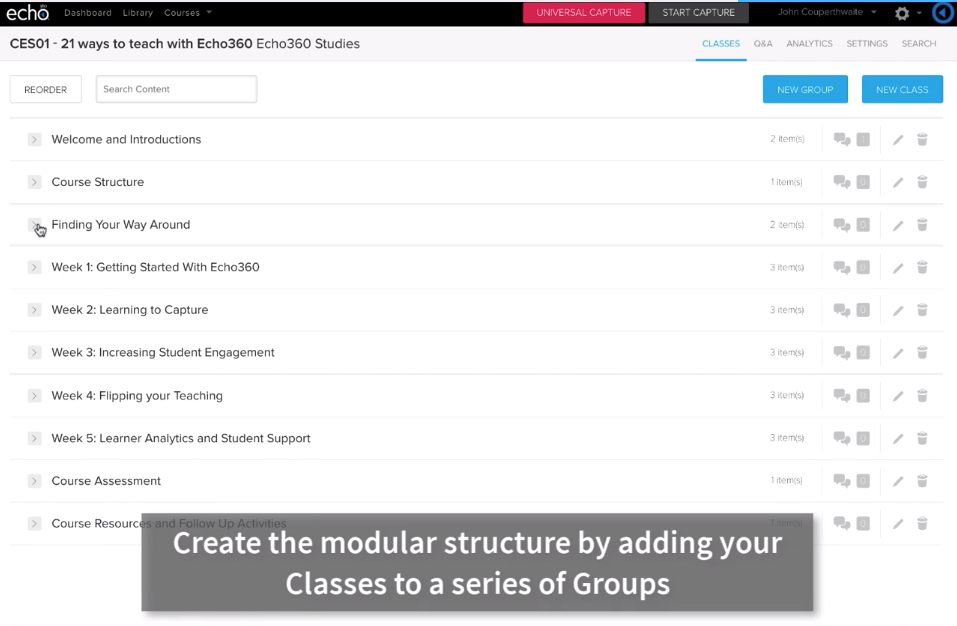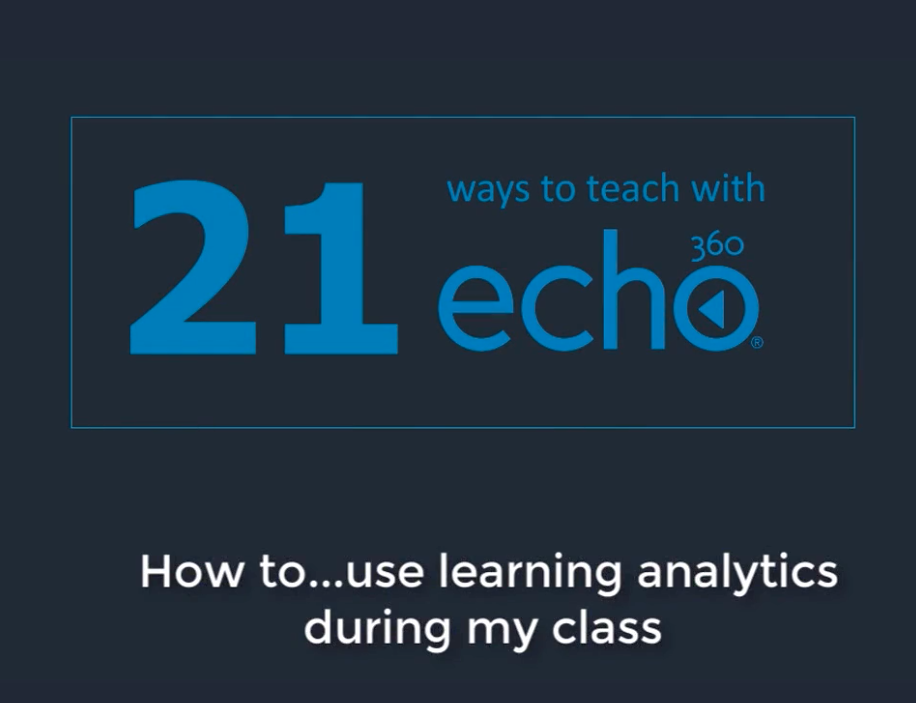3 Ways Technology Supports Learning for 21st Century Students

Institutions of higher learning must serve a more diverse group of students than ever before. Students today have different experiences, expectations, and needs from those in the past. Many of them are being taught skills for jobs that didn’t exist 10 years ago (think data scientist, cloud computing specialist, and drone operator, just to name a few).
Exponential advances in the areas of IT, AI, and automation mean that colleges and universities must prepare individuals with the cross-disciplinary skills and know-how to create and contribute to jobs and industries that do not yet exist. Lifelong learning is no longer an option; it is a required mindset and skillset if one expects to have lifelong employment.
The Non-Traditional Student – It’s the New Normal
There is a lot of talk these days about “non-traditional” students and there are certainly a lot more of them. Based on criteria set by the National Center for Education Statistics (NCES), nearly 75% of the more than 20 million students currently enrolled in post-secondary education can be categorized as “non-traditional.” This can be contrasted with the term “traditional student,” who enroll at a college or university immediately after high school, attend full-time, live on-campus and do not have major work of family responsibilities
According to NCES, non-traditional students meet at least one of the following criteria:
- They delay enrollment in their postsecondary education.
- They attend part-time for at least part of the academic year.
- They work full-time (at least 35 hours) while enrolled.
- They are considered financially independent for purposes of determining financial aid eligibility.
- They have dependents other than a spouse. Many have children, but they may also be caregivers to sick or elderly family members.
- They are single parents.
- They do not have a high school diploma and completed high school with a GED or some other completion certificate.
Given this reality, we can definitively say that the non-traditional student is the new normal.
Today’s Students are Older and Most-likely Working
A lot has been written about the influx of digital natives into higher education, students born after 1995 (Generation Z) for whom the Internet has always existed. But, they are not the only people who make up today’s student body. Who are the rest?
Here’s a quick snapshot of who is enrolled in post-secondary programs in the US based on data collected by the NCES and The Georgetown University Center on Education and the Workforce.
- In total, more than 20 million students are enrolled in degree-granting, post-secondary institutions.
- Nearly 41 percent of students are 25 years of age or older.
Students are not only older, but they also “earn while they learn.”
- About 14 million (roughly 70 percent) of college students work, with 40 percent of undergraduates and 76 percent of graduate students working at least 30 hours a week.
- 25 percent of all working learners are simultaneously employed full-time and enrolled in college full-time.
- 19 percent of all working learners have children.
Given these challenges, and given the diversity of today’s student population, here are 3 ways in which technology can support the needs of today’s student.
Interactive Video: A Key to Student Achievement and Retention
Echo360 CEO Fred Singer wrote in an a recent article in EdSurge that, “Colleges and universities are awash in digital video.” Video is everywhere in higher education. Without video, we would not be witnessing the explosion of online learning (about 1 in 4 students today have taken at least one class online), as well as flipped classrooms and blended learning models of instruction.
Research reveals a very high student demand for lecture capture services. Additionally, research also supports the view that video plays a critical role for improving student achievement and retention.
Making video interactive by combining it with engagement tools makes it even more powerful. Our own analysis of how students use Echo360 bears this out. Student engagement increases seven-fold when social learning and student response tools are integrated with classroom videos.
Independent research conducted by the University of Ottawa and published in The Canadian Journal for Scholarship of Teaching and Learning (Volume 7, Issue 1), also supports this view. Their research demonstrated how Echo360 video boosted student confidence and improved grades. 75 percent of the students surveyed felt that classroom video facilitated and improved their learning.
Students on the Go Means Learning on the Go
21st century learners live and work in an “on-demand” economy. Apps on smartphones allow people to order food and groceries, transportation, stream their favorite movies and television shows, and more, all with a touch of a finger. On-demand access to their classes and course content should be equally as easy and convenient.
On-demand access to lectures and presentations is even more important for the 70 percent of students working full or part-time. Demands of their workplace and life in general may require that they miss a physical class from time-to-time. But the ability to access classroom presentations via laptops, tablets, or smartphones while on the go, allows them to keep pace with instruction; this is critical for student persistence and retention efforts.
With mobile technology, classrooms are no longer limited by four walls or the boundaries of a university campus. The Echo360 mobile app is a good example of how this can work for students. This fully featured app allows students to:
- View on-demand class recordings and live streams
- Create and publish their own recordings
- Respond to polls and other class activities
- Ask questions and discuss video content with instructors and peers
- Indicate confusion about a topic during class or upon review of the video
The app also lets instructors, administrators, and advisors track student attendance and use. Teaching and learning can now happen anywhere, at any time.
Students Aren’t Shy about Sharing Info; Institutions Must Use It
21st century learners live and work in a time in which their every movement and keystroke online is tracked. That experience has made them comfortable sharing their personal data. A recent student survey revealed that 77 percent of students want universities to use their data to transform the teaching and learning experience. Here are two examples of how instructors use Echo360 to do this.
At the University of Michigan, Dr. Perry Samson has developed a predictive model the uses Echo360 analytics and institutional data. Using this model, Dr. Samson could predict which students would fail in the second week of class with an 80 percent accuracy, even before they had taken their first exam. This provides an opportunity for intervention and remediation which can ultimately lead to more students passing.
To learn more about how Dr. Samson uses Echo360 as a student early warning system, watch the video from his presentation at Online Educa Berlin.
Another example of how to use student data to improve learning can be found at Indian River State College (IRSC). Instructors and administrators at IRSC combined data from their Blackboard LMS, which provides course-level information, with Echo360 learner analytics for individual students detailing their classroom and study behavior. Using these data, they could:
- Pinpoint specific areas within lectures where students were confused or struggling.
- Adjust their teaching methods based on that information to remediate and clarify difficult concepts, and;
- Identify students who needed extra help and assign additional tutors to their academic support center.
The past decade has seen unprecedented disruption in higher education. There is no reason to think this trend is going to change. But with change comes opportunity. 21st century technology allows instructors to teach a new generation of students in more flexible and creative ways. Interactive video, mobile computing, data and learner analytics are three tools instructors can use today to help their students meet the challenges of the knowledge and on-demand economy.
To learn more about how to implement Echo360 at your institution fill out our contact form to be contacted by a Manager of Academic Partnerships.





